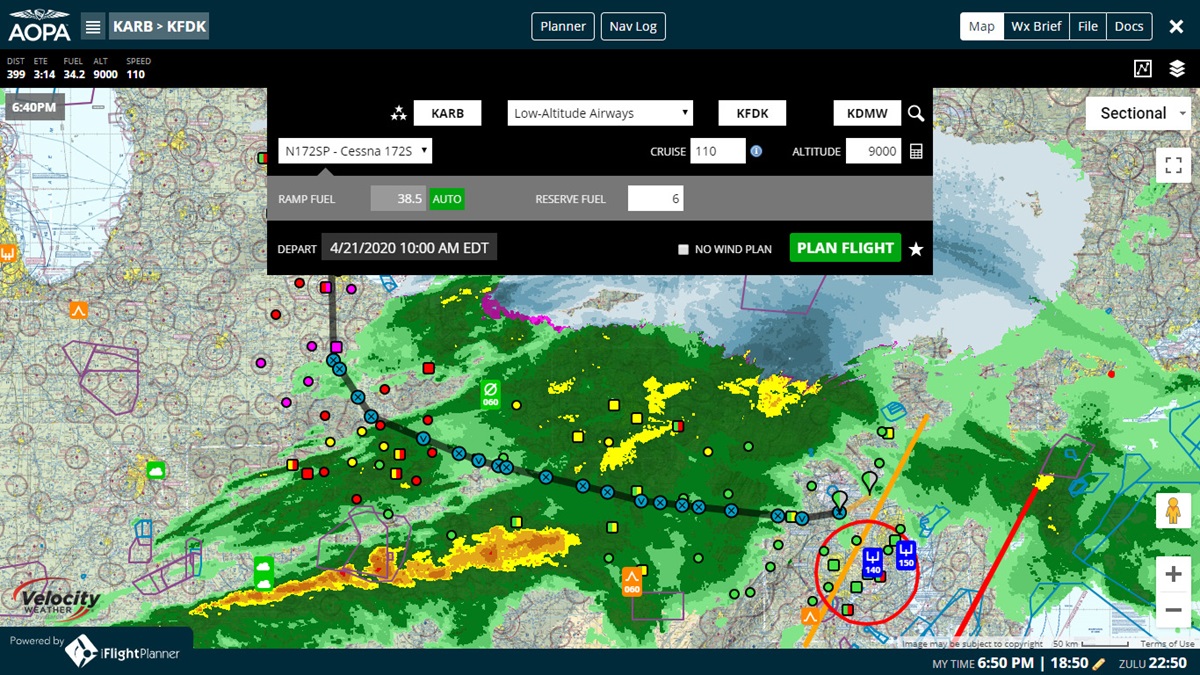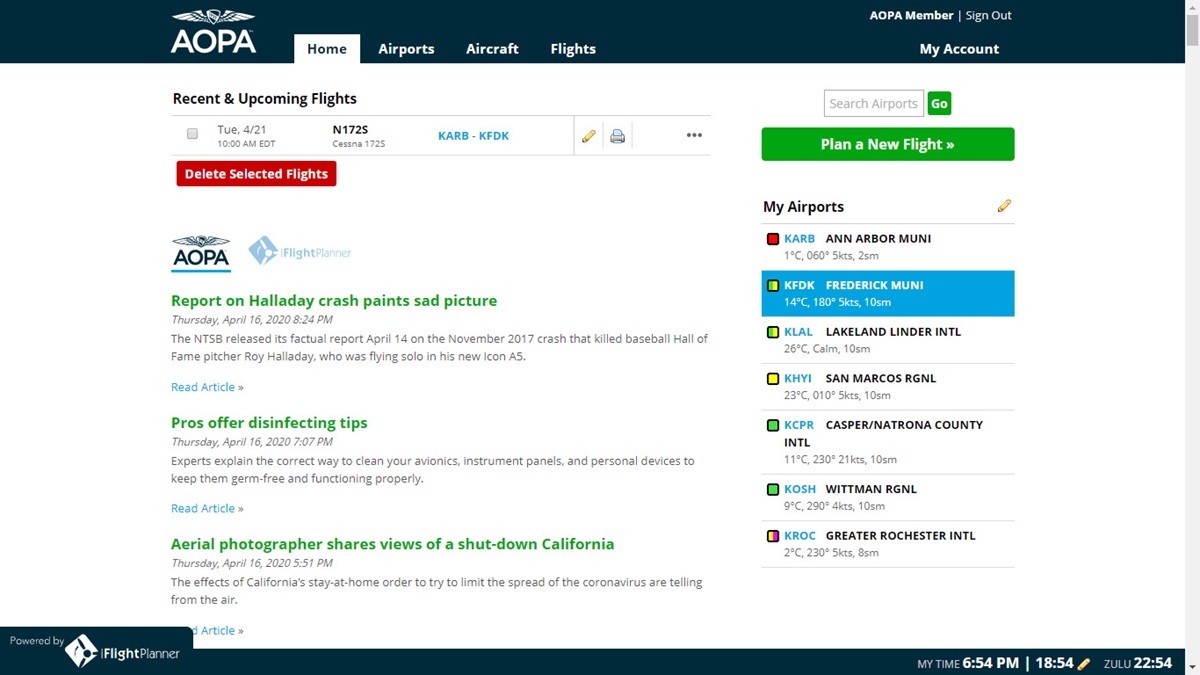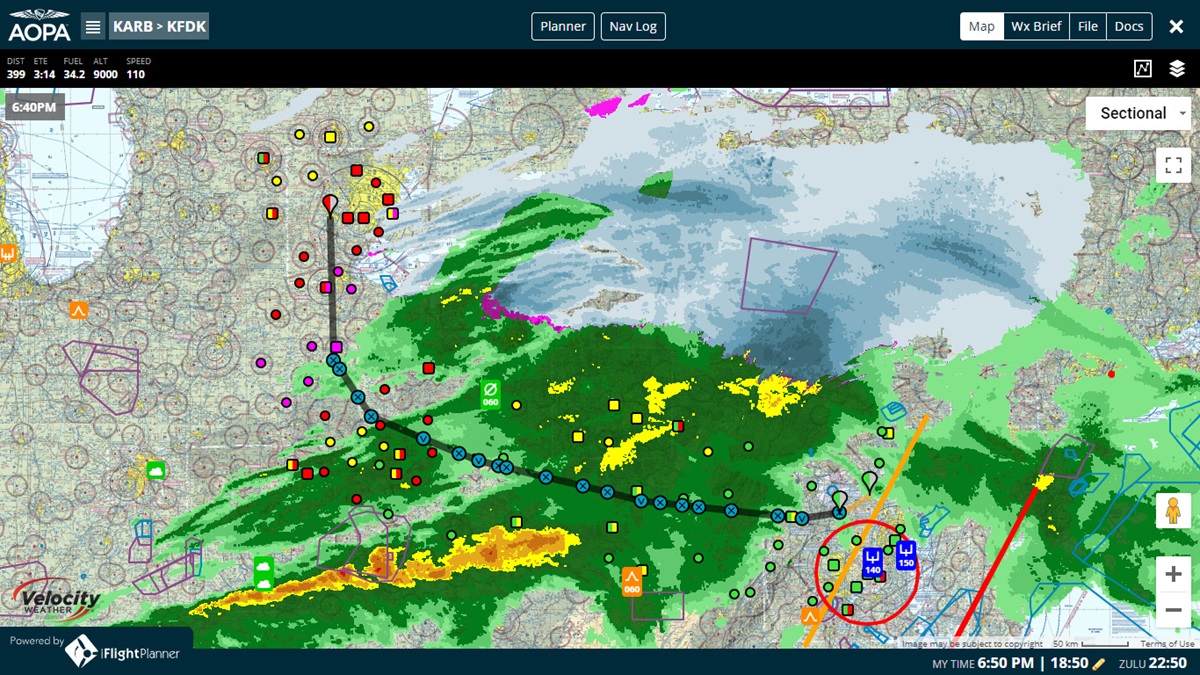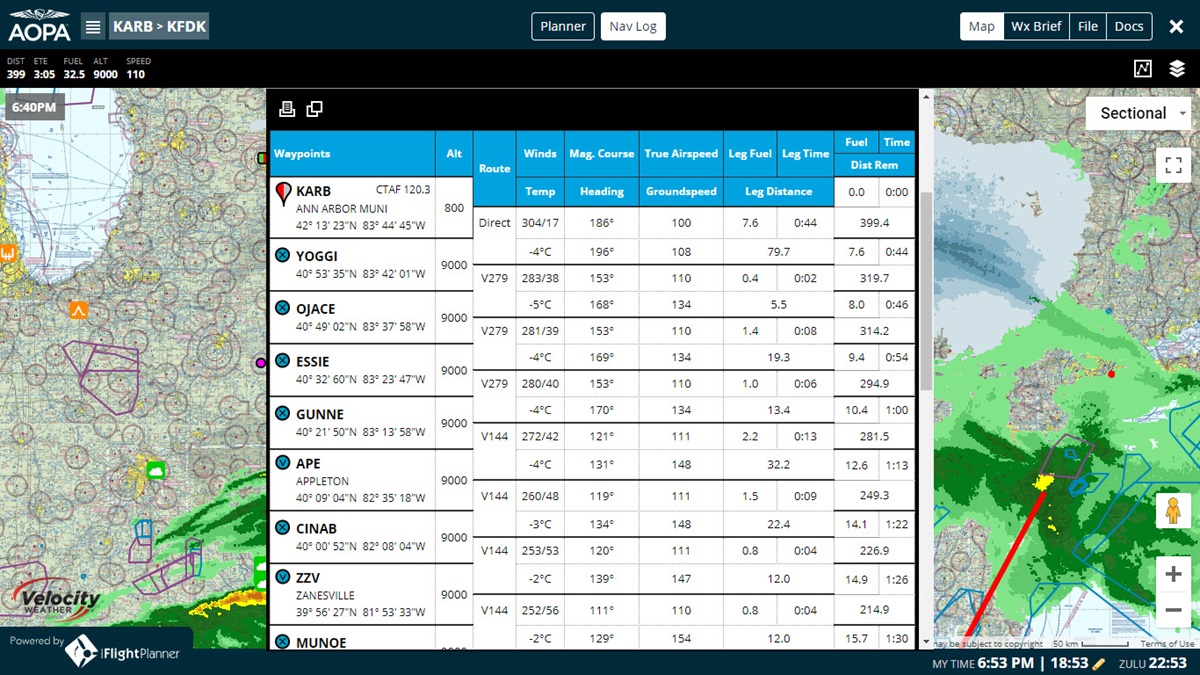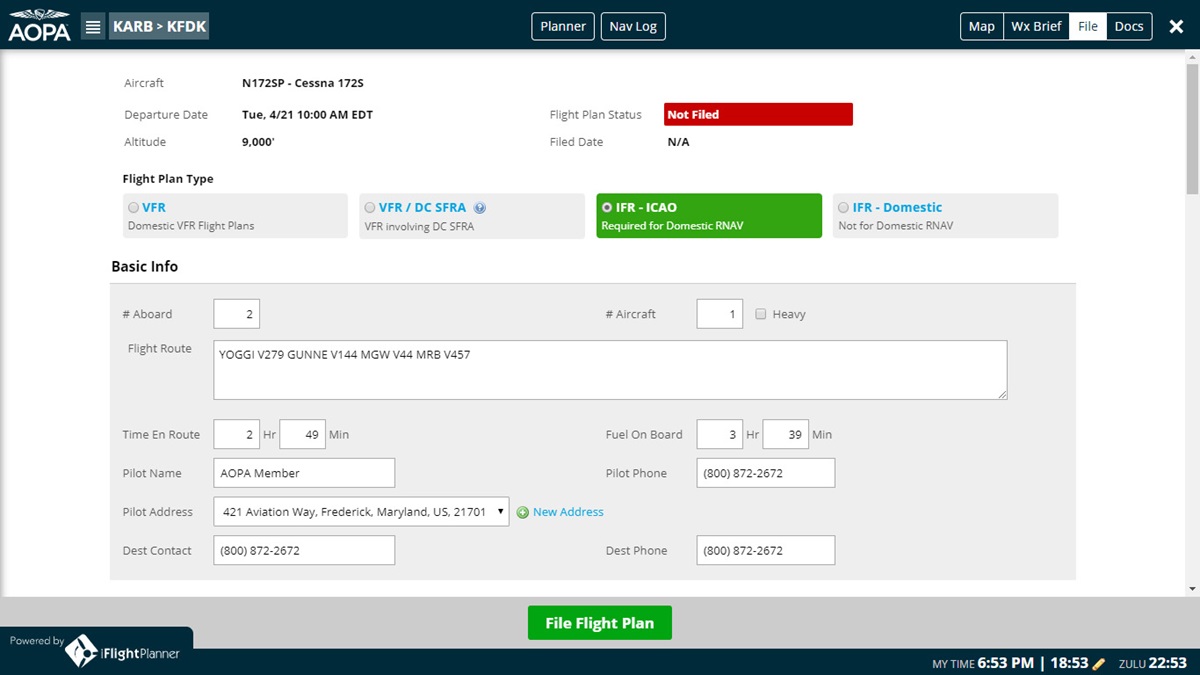AOPA announces access to new flight planner
When AOPA announced that the legacy software powering AOPA’s popular online flight planning tool would be discontinued by the end of April, our information technology leaders were already hard at work finding a replacement to meet AOPA members’ needs. That replacement flight planning tool became available on April 22.
As the legacy flight planner sunsets, AOPA leaders expressed deep gratitude to Boeing and its Jeppesen team for their long support of the historic AOPA product and their help in transitioning to a new membership offering.
“AOPA is pleased to offer members access to a very capable web-based flight planner, customized with many features especially for AOPA pilots,” said Jiri Marousek, AOPA senior vice president of marketing. “Beginning April 22, members can use a customized version of iFlightPlanner accessible through any web browser on desktop, tablet, and mobile devices. We have been working with iFlightPlanner to offer several new features not previously available, including options free to AOPA pilots that are otherwise only included in paid versions of their products.”
The planner combines the newer technology and graphical capabilities of iFlightPlanner with its version of a select set of features that were most commonly used by AOPA members in the legacy system. One of the most important additions will be a powerful web interface with FAA-produced aeronautical charts and other visual displays related to weather, airspace, and airport services designed to provide pilots with current information to effectively plan their flights.
Based on a mobile-friendly web design, the system will afford users a fast and visually compelling environment that is constantly up to date without needing to download current chart updates, weather, or other data. Members will be able to intuitively plan routes with click-and-drag “route rubberbanding” over high-resolution aeronautical charts. The planner also provides certified weather briefings and flight plan filing through Leidos Flight Service.
Graphical features of the new flight planner include FAA-produced VFR sectional and terminal area charts, IFR low and high en route charts, standard instrument departure and standard terminal arrival procedures, airport diagrams, and the U.S. chart supplement (formerly called airport/facility directory). The planner will include options for visual overlays of current radar and infrared satellite imagery, as well as graphical representations of airmets, sigmets, pireps, METARs, terminal area forecasts, temporary flight restrictions, airspace class, and special-use airspace. Users can also access pertinent information about airports to include runway details, frequencies, instrument approach procedures, notams, remarks, available FBO services, and current fuel pricing.
Through intuitive, easy-to-follow screen layouts in the program, users can manage their favorite airports and customize routes, aircraft profiles, and planning settings. A wide range of color-coded icons provide quick reference for situations such as flight conditions or fuel prices along a route of flight. When a planned flight will begin to consume reserve fuel and when it will reach zero fuel are also graphically represented. Detailed navigation logs, an alternate airport finder, altitude comparison tools, fuel planning features, downloadable airport diagrams and procedures, and printable flight documents are among the many special features of the program.
Another important aspect of the transition to the new flight planner is the transfer of existing pilot profiles and information that is stored in the current, sunsetting AOPA flight planner. All pilot, aircraft, and route profiles that members have saved in the existing system prior to April 22 will automatically transfer into the new iFlightPlanner version. This includes stored routes, flight plans, and custom waypoints that users have set up. It is important to note that because of the required transition period between products, any new data created in the legacy system between April 22 and 30 will not be migrated to iFlightPlanner.
For AOPA members who desire to go further with the technology, special discounted pricing is available to upgrade into iFlightPlanner’s Core and Premium membership levels. Both levels include feature-rich electronic flight bag functionality to take the flight planning tool into the cockpit. iFlightPlanner Premium includes additional features, such as a weight-and-balance calculator, ADS-B In, georeferenced airport diagrams and instrument approach procedures, and a pilot logbook. AOPA members can expect to save 20 percent on the various pricing levels of these upgraded memberships, which are detailed on iFlightPlanner’s website.
AOPA members can access the new tool through AOPA's flight planning page. Accessing iFlightPlanner through this portal will verify free access for AOPA members. Stored flight plans and profiles set up through the legacy planner will be pre-loaded into iFlightPlanner. From April 22 through 30, both the sunsetting legacy flight planner and the new iFlightPlanner will be available.
iFlightPlanner leaders emphasized that the tool will continue to grow and evolve as AOPA members provide insight into features that would enhance the flight planning experience.
“From day one, iFlightPlanner’s evolution has been driven by member feedback and this new version will be no different,” said Andy Matthews, director of business development for iFlightPlanner. “We encourage AOPA members to share their feedback as they begin using the new planner, and help shape new features to further enhance every member’s flight planning experience.”

